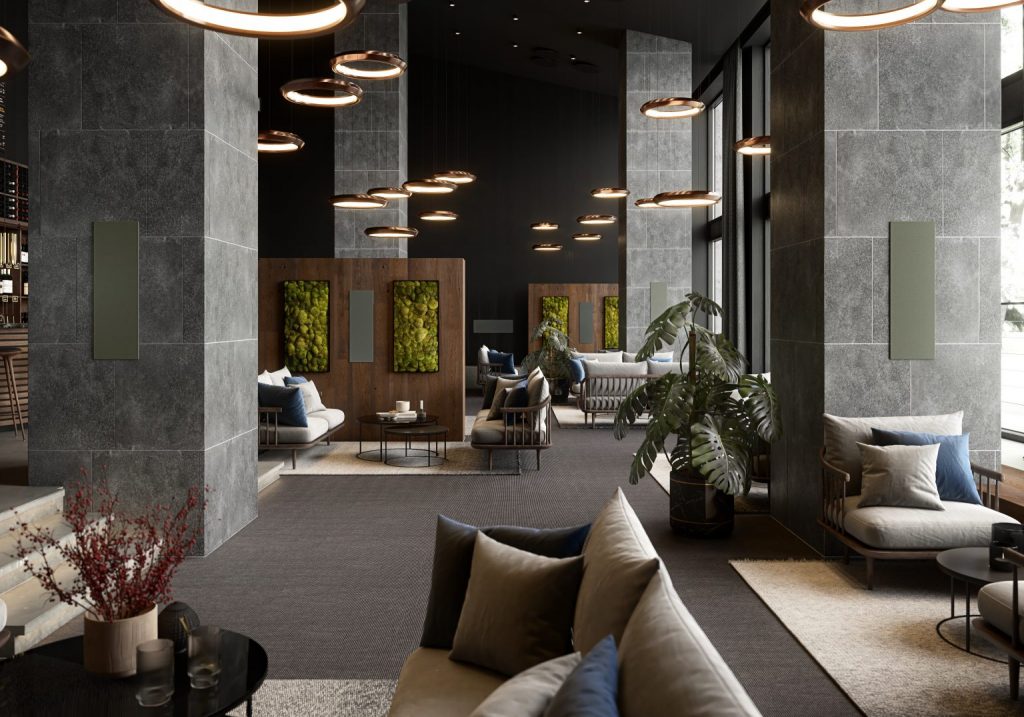Passive acoustic absorbers are controlling reflections of sound without input power from outside. Examples for passive absorbers are:
- Porous absorbers
- Panel absorbers
- Resonance absorbers, slat absorbers and perforated panel absorbers
Porous absorbers
Sound can be understood as the vibrations of air molecules. Porous absorbers are opencell materials and address the vibratory energy by means of their resistance. The energy penetrating the small spaces in porous materials can be dissipated in form of heat. This kind of absorbers are most effective at locations (where sound propagation inside the room has the most particle movement (particle velocity). That is placed at a distance of a quarter wavelength from a hard reflecting surface. If mounted on a surface, porous absorbers are most effective at higher frequencies and extends to the lower frequencies by increasing the thickness of the absorber.
Panel Absorbers
Panel absorbers are used to obtain absorption in the low-frequency ranges. Now, sound pressure is addressed rather than particle velocity by dissipating the acoustic energy mechanically through motion. The absorption is maximal at the frequency at which the absorber is resonant and at locations where the sound pressure shows maxima like room boundaries or room corners

Keeping room boundaries flexible can also be useful to absorb energy in the low frequency range. Panel absorbers can be tuned to specific room modes by changing the mass of the panel as well as the stiffness of the air cavity behind the panel which acts as a spring. The absorption can be increased as porous material is used to fill the air cavity behind the panel. An empirical formula for the resonance frequency can be given by:

m………….surface density or mass per unit of area d…………..depth of the airspace behind the panel
As one increases the airspace behind the panel (less stiff spring) or the mass of the panel itself, obtains a decrease of the resonant frequency. Figure 1. depicts a panel absorber stuffed with absorbent material placed on a room boundary.
In this post, we explored two types of sound absorbers that are effective in controlling sound reflections; Other types of these absorbers and the things that need to be mentioned to improve the sound will be published in future posts. These will pave the way for creating a home theater of the highest quality.
The audio products offered in Saba smart systems, which include dali speakers, Yamaha and Cambridge audio amplifiers, and inakustik cables with great variety and high quality, make it possible to implement any type of equipment to meet the relevant needs.



